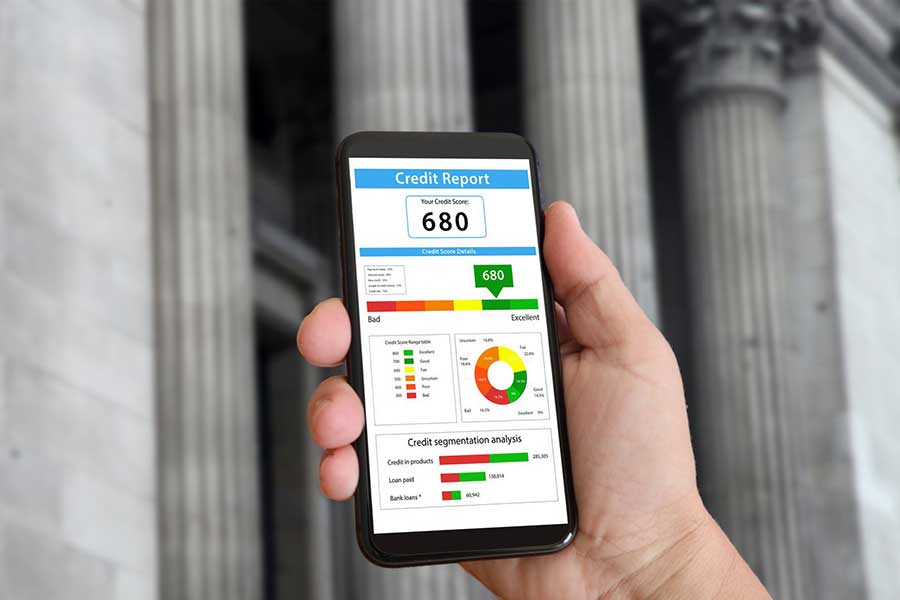FICO has rolled out new models—FICO 10, FICO 10T, FICO 10 BNPL, and FICO 10T BNPL—that give lenders a clearer view of borrower habits. These updates go beyond traditional point-in-time data and focus on longer trends and emerging behaviors like Buy Now, Pay Later (BNPL) usage.

If you’ve been paying down credit card balances consistently or keeping BNPL payments on track, these models could help your credit score. If you’ve been opening multiple personal loans or missing short-term payments, the opposite could happen.
This guide explains each model, how they differ, and how to get ready before lenders fully adopt them.
What Is FICO 10?
FICO 10 is the base model in the new scoring family. Released in 2020, it refines how lenders assess risk using newer data and stronger predictive analytics. It still uses the standard 300–850 scale but sharpens how late payments, personal loans, and debt patterns are evaluated.
Key differences from older models:
- Updated personal-loan weighting: Debt consolidation through personal loans can temporarily reduce your credit score.
- Stricter late-payment penalties: A missed payment now has greater impact.
- Refined data treatment: Pulls newer credit report data for more consistent accuracy.
- Medical debt handling: Medical balances still carry reduced weight but remain a factor.
FICO 9 vs. FICO 10 Comparison
| Feature | FICO 9 | FICO 10 |
|---|---|---|
| Medical debt impact | Lower | Slightly higher |
| Trended data used | No | Only in 10T variant |
| Late payment sensitivity | Moderate | Higher |
| Personal loan penalty | Minimal | Increased |
What Makes FICO 10T Different
The “T” in FICO 10T stands for trended. This version looks at how your balances and payments evolve over roughly 24 months, not just where they stand today.
Someone paying down balances steadily will likely score higher than someone whose balances stay flat or grow, even if both have the same utilization today.
Highlights of FICO 10T:
- Long-term data: Evaluates two years of payment patterns.
- Consistent progress rewarded: Paying more than the minimum helps.
- Growing debt penalized: Rising balances signal higher risk.
- Higher accuracy: Provides lenders a clearer view of financial behavior.
FICO 10 vs. FICO 10T Comparison
| Feature | FICO 10 | FICO 10T |
|---|---|---|
| Uses trended data | No | Yes |
| Time frame | Single snapshot | 24 months |
| Rewards consistent pay-downs | No | Yes |
| Penalizes rising balances | Slightly | Strongly |
| Predictive accuracy | High | Higher |
Introducing FICO 10 BNPL and FICO 10T BNPL
Buy Now, Pay Later financing from services like Klarna, Afterpay, and Affirm has changed how people shop—but it also created blind spots in traditional credit scoring. FICO addressed this by launching FICO 10 BNPL and FICO 10T BNPL, which integrate BNPL data directly into the FICO 10 framework.
These versions help lenders see how borrowers handle short-term installment plans in addition to standard credit lines.
Key features of FICO 10 BNPL and FICO 10T BNPL:
- BNPL data integration: Includes repayment activity from participating BNPL lenders.
- Short-term repayment focus: Reviews 6–12 months of BNPL behavior.
- Positive reinforcement: On-time BNPL payments can raise your credit score.
- Missed-payment sensitivity: Late or skipped BNPL payments carry extra weight.
- Extended insight in 10T BNPL: Combines 24 months of trended data with BNPL trends for maximum predictive accuracy.
Comparison of FICO 10 Models
| Feature | FICO 10 | FICO 10T | FICO 10 BNPL | FICO 10T BNPL |
|---|---|---|---|---|
| Includes BNPL data | ❌ | ❌ | ✅ | ✅ |
| Uses trended data | ❌ | ✅ | ❌ | ✅ |
| BNPL time window | — | — | 6–12 months | 6–12 months + 24-month trend |
| Predictive accuracy | High | Higher | Higher | Highest |
| Best for | General lending | Mortgages / loans | Retail BNPL credit | BNPL + traditional credit |
How the New Scores Could Affect You
These models reward steady, predictable progress while flagging erratic borrowing behavior.
You may benefit if you:
- Pay down credit card balances: Trended data favors declining utilization.
- Manage BNPL carefully: Few active plans and consistent payments work in your favor.
- Avoid frequent personal loans: Too many consolidations can lower scores.
You may see lower scores if you:
- Miss BNPL payments: Even small late payments can have an impact.
- Carry rising balances: Increasing debt month over month signals risk.
- Open new loans frequently: Repeated new accounts suggest instability.
What Lenders Are Using These Models
Adoption takes time. Most banks and credit unions still rely on older versions, but FICO 10T and the BNPL variants are gradually entering use among personal-loan, retail, and fintech lenders.
FICO Model Usage by Lending Category (2025 Estimate)
| Lending Type | Common Model | Adoption Trend |
|---|---|---|
| Credit cards | FICO 8 | Stable |
| Auto loans | FICO 9 | Transitioning to 10 |
| Mortgages | FICO 2/4/5 | Awaiting regulatory approval |
| Personal loans | FICO 10T | Growing |
| BNPL providers | FICO 10 BNPL / 10T BNPL | Emerging |
How to Prepare for the Shift
These updates reward consistency. Lenders will soon focus more on how your balances change over time than on one-month snapshots.
Steps to stay ahead:
- Pay more than the minimum: Shows progress across trended data models.
- Limit BNPL accounts: Keep no more than one or two active plans.
- Check your credit report regularly: Verify that BNPL activity is accurate.
- Avoid repeated debt consolidation: Frequent refinancing can appear risky.
- Maintain low utilization: Aim for under 30 percent across all accounts.
How to Find Out Which FICO Model Your Lender Uses
Different lenders rely on different versions. You can ask them directly or check through paid monitoring tools that show multiple FICO versions.
| Lender Type | Typical Model |
|---|---|
| Credit cards (Discover, Chase) | FICO 8 / 9 |
| Personal loans (SoFi, Upstart) | FICO 10 / 10T |
| Fintech BNPL providers | FICO 10 BNPL / 10T BNPL |
| Mortgage lenders | Legacy FICO 2/4/5 |
Final Thoughts
FICO’s latest models focus on long-term habits instead of short bursts of activity. They highlight steady payment behavior, consistent debt reduction, and responsible BNPL use.
As lenders adopt FICO 10, 10T, 10 BNPL, and 10T BNPL, consumers who manage their credit proactively will gain an edge. Start now—review your credit report, lower your balances, and handle BNPL plans wisely to benefit from the shift ahead.
Frequently Asked Questions
Will BNPL Accounts Automatically Appear on My Credit Report?
Not yet. Only BNPL lenders that choose to report your data will show activity. As participation grows, these accounts will be visible in newer FICO models.
Does FICO 10 Replace Older Versions Completely?
No. Adoption happens gradually. Many lenders still use FICO 8 or 9 until system updates are complete.
Which Score Do Mortgage Lenders Use?
Mortgage lenders continue using older FICO models (2, 4, and 5) until federal regulators approve the switch to FICO 10 and 10T.
How Do the New BNPL Models Affect Consumers Without BNPL Accounts?
If you don’t use BNPL, your FICO 10 or 10T score functions as usual. The BNPL versions only apply when lenders have relevant BNPL data.
How Can I Improve My Credit Score Under These New Models?
Make consistent payments, pay down balances month after month, and manage BNPL plans carefully. Positive payment trends matter more than one-time fixes.




